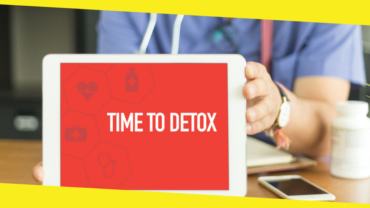How To Optimize The Benefits of Your Power Nap
This post was last updated on November 19th, 2024

Congratulations – if you’re immersed in a power nap, you’re in famous company. Winston Churchill, Leonardo da Vinci, JFK, and even Einstein were all enthusiasts of this afternoon brain shut down. Whether this signals some sort of relation to greatness is pushing it – though what remain undoubted are the advantages of taking forty winks and relishing a mental timeout from the vagaries of the day.
There was an occasion when napping during the day earned you the title of a sloth. A lazy degenerate with a negative attitude! Well, the sleepyheads listening will be thrilled to hear that this is no more the case – fairly the opposite really.
These days, you don’t require grabbing some minutes of shuteye on a train or at a café. Employers are growingly identifying the advantages of a power nap as a successful means of triggering both performance and attention and are considering this when planning office layouts and schedules.
What Comprises A Power Nap?
A power nap is a short nap, no less than thirty minutes long. It’s a highly effective means to refresh your mind whenever you feel sluggish and tired. Power naps offer your brain and body with the recuperative benefits of sleep as it boosts your alertness and cognitive abilities, without adversely impacting the capacity to fall asleep at night.
The crux to power naps lies in the duration: power naps shouldn’t cross these thirty minutes. Any prolonged naps than 30 to 40 minutes – simply don’t do it. Why? Because the body reaches the deep sleep stage around that time, and awakening from a deep sleep can cause drowsiness or grogginess. So don’t take longer naps, unless you have a complete sleep cycle of 90 minutes to spare.
When To Go For A Power Nap
There is no perfect moment to take a power nap. The finest timing depends primarily on personal aspects, like a person’s schedule. The best time to nap, for those who perform a 9 to 5 job, could be prior to or during the “post-lunch drop,” which frequently happens between 12:30 and 2 p.m.
Naps following 4 o’clock are not advised for people who work in the daytime. A late day nap might disturb a person’s circadian cycles and their capacity to undergo a sound night’s sleep.
The ideal moment for a power nap, nonetheless, can be earlier or later for shift workers or persons who work evenings.
Promising Benefits Of A Power Nap
Most experts acquiesce that the body requires 7-9 hours of sleep daily, based on personal and genetic factors. A few researches display that six hours or lower triples your danger of a car accident.
A power nap is connected with multiple health and lifestyle advantages.
1. Improves Learning And Understanding
The recuperative power of sleep rests in REM sleep (the stage following deep sleep) as it aids in the restoration of the body. It paves way for imagination, and detailed comprehension, and helps you to recollect the information you’ve assimilated during the day. Naps have comparable effects, whether it’s sleep for an hour or a quick fifteen minutes catnap. Think about taking a nap whenever possible.
2. Improves Productivity
Studies have shown that napping can enhance memory, mood, and attentiveness. Doctors advise taking a nap in the afternoon can assist you unwind and free tension. Consequently, they are occasionally termed as “power naps” since they boost productivity and improve body functioning. Power naps improve our ability for logical reasoning, boost memory, and aid us handle stress efficiently.
3. Promotes Recovery And Growth
Even if the bank looks promising, you need to know if they have the account that suits your needs. The more varied the services and accounts are, the better. When choosing a bank, consider your future needs, too. You may only need to open a savings account for now, but may need loans or insurance in the future. So better choose the ones that offer a lot of choices, so you don’t have to change from bank to bank according to your needs.
4. Inspires The Body To Eat Perfectly
Inadequate sleep can elevate the release of neurotransmitters such as ghrelin (the hunger hormone), thereby, raising the desire to eat. People who don’t obtain sufficient sleep may feel overfilled or experience no appetite. Therefore, taking a nap would compensate for inadequate sleep while assuring the correct release of diet-associated hormones.
5. Controls Blood Pressure
As per data furnished at the 2019 American College of Cardiology’s Annual Scientific Session, an afternoon nap can decrease blood pressure substantially. According to the study, taking frequent naps lowers blood pressure by 5 to 7 mm Hg, which is similar to the impact of consuming a low-dose blood pressure medication.
Power napping is really quite magical. It can aid you feel more eased and more rejuvenated, lowers fatigue, and raises alertness, and also boosts your mood, memory function, and reaction time.
Power napping can also improve your immune system and decrease stress. A brief study revealed that short, thirty minute naps have stress alleviating and immune advantages. Another study displayed that power naps may preserve your heart health. Participants who underwent power naps once or twice a week had a reduced risk of cardiovascular occurences.
Even NASA performed research into power naps. They saw that following a 25 minute power nap, astronauts had greater alertness which remained for 2 hours.This study has caused power naps to become a regular part of the astronauts’ program.
So, if you thought you were spoiling time while basking in a midday interruption: think once more. The benefits are real. It really turns you more productive – so always connect with the feeling whenever you wish to close your eyes for sometime.
How To Undergo A Power Nap
Some people come out of a power nap, eager to take on the world. Others need some time to discard the sleep inertia and prevent feeling groggy. It might need some trial and error to find out if a power nap is helpful for you.
But if you find out time to take an afternoon catnap, these tips can assist you optimize the benefits.
1. Make It Early
Sleeping extremely late in the day can render it harder to go to sleep at night, leading you to a day of sleep deprivation. It is advised to nap earlier in the afternoon to prevent interfering with nighttime sleep.
2. Set An Alarm
To ensure your power nap doesn’t convert into a marathon sleep sesh, fix an alarm to awaken you after twenty or thirty minutes.
3. Set The Stage
A relaxed sleep enviroment is as essential for your daytime slumber as it is regarding your night sleep. Grab a comfortable blanket and find a dark, quiet, cool place to rest. It is stated that light, noise and uncomfortable temperatures can disturb your sleep quality, even though you don’t remember waking while napping.
So what is keeping you waiting? Find a comfy corner, grasp an eye mask and set a timer. The power nap is calling you out.
If you wish to get more sleep and the health benefits that accompany sufficient sleep, here are a few tips for more efficient napping and sleep at night:
Don’t take caffeine after 3 p.m. it’s a stimulant that can disturb your sleep and remain in your system more than you think; its half-life is 4 to 6 hours!
If you don’t get time for a power nap or aren’t comfortable napping in the day, try out meditation; it offers your body a rest and generates slower brain waves resembling sleep.
How Long Should You Sleep?
When you sleep you travel through various stages of sleep, known combinedly as a sleep cycle. These stages comprise light sleep, deep sleep (during which stage the body is believed to repair itself), and rapid-eye-movement sleep, or REM sleep (which repairs the mind).
Many experts recommend maintaining the nap between 15 to 30 minutes, as sleeping more dives you into deeper stages of sleep, from which it’s harder to awaken. Also, prolonged naps can make it tougher to fall asleep at night, particularly if your sleep deficit is comparatively lesser.
Nonetheless, research has revealed that a one hour nap has much more restorative effects than a thirty minute nap, including a much marked improvement in cognitive functioning. The key to napping longer is to perceive how long your sleep cycles are and attempt to awaken at the culmination of a sleep cycle. (It’s really more the break of the sleep cycle that turns you groggy, instead of deeper states of sleep.)
As there are ups and downs of each length of sleep, you may wish to let your schedule determine: if you just have fifteen minutes to spare, take them! But if you carry out an hour nap, you may do well to finish a complete sleep cycle, even though it implies less sleep at night.
If you just have five minutes to spare, simply close your eyes; even a short rest has the advantage of lowering stress and aiding you relax a bit, which can boost your energy to accomplish your daily tasks. But don’t mix up a brief rest with microsleep.
The Consequences Of Sleep Deprivation
Sleep is cumulative; if you omit sleep one day, you experience its fallout the next moment. If you miss sufficient sleep a few days successively, you live through a ‘sleep deficit’, which damages the following:
- Judgment
- Reaction time
- Vision
- Short-term memory
- Information processing
- Performance
- Vigilance
- Motivation
- Patience
Fatigued people may also feel elevated moodiness, aggressive behaviors, increased stress, and burnout.
Bottom Line
Feeling exhausted during the day is a regular phase in life. If you haven’t experienced success in keeping yourself awake and alert during an afternoon layoff, consider adopting a power nap. These short naps can offer benefits that not just bolster your mood but even your health, learning, performance, and productivity. So, next time you experience sluggishness, assign twenty minutes to rest and recharge. You may discover that power naps are the exilir you need.
You may like this: Tips to Improve Hangry | It’s All About Hangry Management
Recommended For You
Finding the Right Treatment Center is Key
Sujata Sanyal
Sujata Sanyal has been in the writing circuit for the past 7 years and has touched upon various genres like travel, health, lifestyle, a wee bit of technology, cuisine, product descriptions and a bevy of others. 1 part of her is interested in animated political discussions, 2nd part interested in studying biographies and the remainder part in love with music and socially relevant work. Too many parts?




